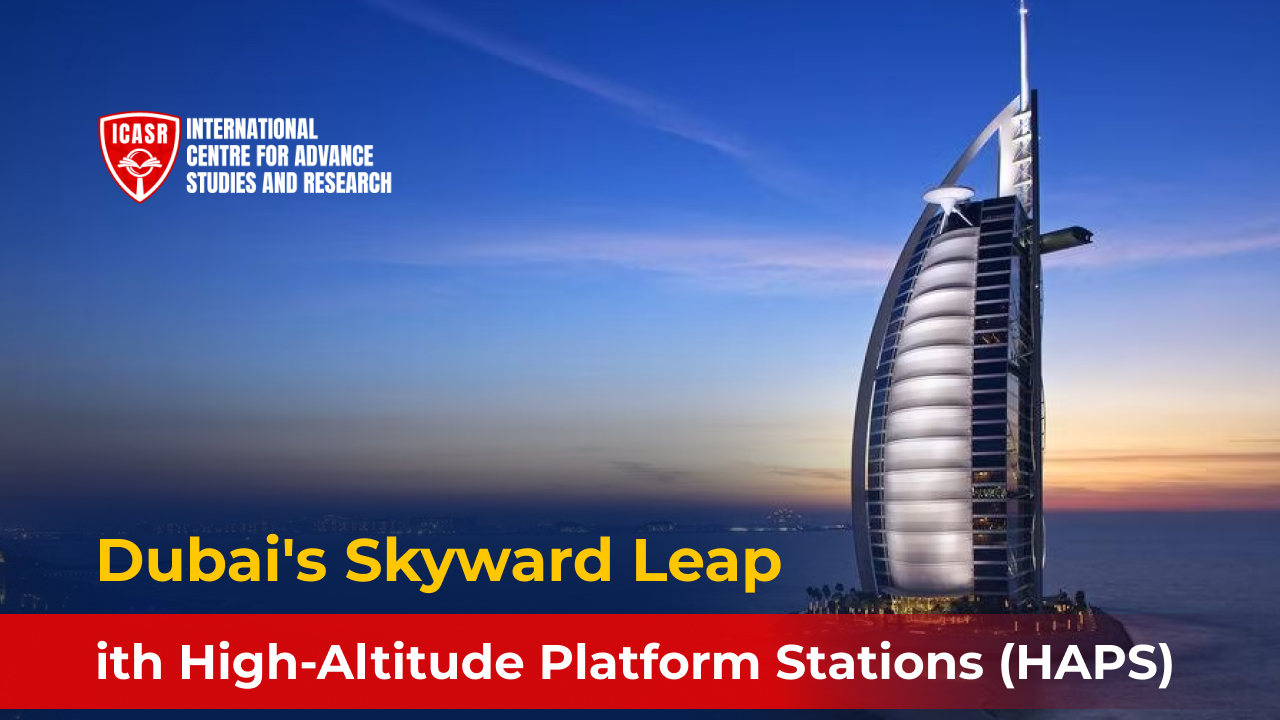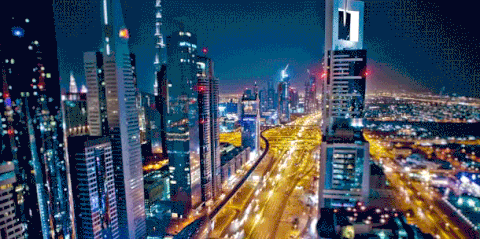
One more time, this city gazes again at the skies with the aim of becoming a global front-runner in high-altitude platform stations (HAPS). HAPS, which are simply tethered balloons or lift vehicles for air at very high heights can be utilized for many other purposes besides telecommunications, remote sensing, environmental monitoring and research.
Dubai continues to exemplify luxury and innovation in its bid to remain at the top of technological advancement. This time however this urban center has chosen aircraft flying at great altitudes – an indicator of its ambition to become the world leader in HAPS (High Altitude Platform Station). HAPS are balloons or fixed-wing aircraft tethered at great heights and they provide unique platforms for several applications ranging from telecommunication systems through satellite surveillance to scientific research.
Understanding HAPS
HAPS flight at heights of 10 to 30 kilometres sea level, much above the scope of traditional aeroplanes and balloons. Thus, there are various benefits associated with this height:
- Extended Range: Telecommunication and surveillance operations are best suited for HAPS because they can span long distances.
- Stable Platform: Scientific experiments and data gathering will rely on high altitude due to its stability and predictability.
- Solar Power Potential: Due to their high altitude solar energy generation can be done effectively using HAPS.
Dubai's HAPS Initiative:
Dubai's HAPS initiative is highly ambitious and multifaceted. The city aspires to:
- Develop HAPS Technology: Dubai plans to invest in research and development to build advanced HAPS platforms capable of enduring extreme conditions.
- Build a HAPS Ecosystem: A HAPS ecosystem is established by the authorities of the city; their intention is to attract world pioneers, early-stage companies and stakeholders in order to have a definite HAPS Ecosystem
- Utilize HAPS for Various Applications: In Dubai, HAPS is seen as implementable in telecommunications, internet linking, disaster intervention strategies, environmental oversight processes, and scientific research projects.
Key Challenges and Opportunites:
Although HAPS hold immense promise, there are numerous obstacles to overcome:
- Technological Hurdles: Highly reliable and efficient HAPS platforms require important technological developments, particularly in relation to propulsion, tethering systems and power generation.
- Regulatory Framework: A sound regulatory framework for HAPS operations is vital in ensuring safety and preventing interference with other airspace activities.
- Economic Viability: The commercial viability of HAPS is influenced by development costs, operational costs, and maintenance costs among others as well as the revenue from various applications.
- Weather Condition: HAPS have to be designed for extreme weather conditions like high winds, low temperatures, and lightning.
- Air Traffic Control: Careful planning and coordination are necessary to integrate HAPS into existing air traffic control systems.
- Environmental Impact: HAPS could potentially interfere with wildlife or even affect the ozone layer so it must be taken into consideration seriously.
Nevertheless, the opportunities that come with HAPS are of equal importance:
- Better Connection: HAPS enables people living in remote and poor areas to get to the internet hence bridging the digital gap.
- Enhanced Management of Disasters: HAPS can be used for early warning systems, searching and rescuing victims as well as evaluating the extent of damage caused by natural calamities.
- Discovering Environmental Conditions: HAPS can detect air contamination degree, deforestation and variations in climate helping protect these resources.
- Scientific Research: In relation to scientific miracles like astronomies etc., HAPS could also be employed in different scientific investigations including meteorology, astronomy etc.
HAPS Technology:
- Tethered Balloons: These are colossal balloons filled with helium and secured to the earth using a cable. Telecommunications as well as remote sensing benefit from their use.
- Fixed-Wing Aircraft: High-altitude autonomous flight is possible for these UAVs. Surveillance, environmental monitoring, and scientific research are some of the fields where they find application.
- Hybrid Systems: A few HAPS merge between the two types of systems, thus allowing them to have both stability and manoeuvrability.
Potential Applications of HAPS:
- Telecommunications: Providing broadband internet access to remote and underserved areas.
- Disaster Management: Early warning systems, search and rescue operations, damage assessment.
- Environmental Monitoring: Air quality, deforestation, climate change.
- Scientific Research: Astronomy, atmospheric studies, climate modelling.
- Agriculture: Crop monitoring, pest control, land management.
- Urban Planning: Traffic management, infrastructure monitoring.
- Security: Border surveillance, law enforcement.
Dubai's Role in HAPS Development:
- Investment in Research and Development: Dubai is investing a fortune in research and development to improve HAPS technology.
- Collaboration with Global Partners: Dubai partners with global counterparts to learn from them.
- Regulatory Framework: Dubai is working on a legal framework for HAPS.
- Infrastructure Development: Dubai is putting money into roads stations among other things to help HAPS run smoothly.
The Role of Solar Power:
Dubai HAPS is heavily reliant on solar energy. HAPS are therefore powered by solar panels at high altitudes where there exist abundant rays from the sun. With solar power, Dubai can lessen its dependence on ground-based sources and prolong the lifespan of HAPS.
Comparison to Other Technologies:
The HAPS have many benefits related to the use of conventional satellites or UAVs.
- To minimize expenses: Such systems are less costly than satellites that are usually deployed on remote space orbits.
- For greater adaptability: They can easily be repositioned, unlike satellites whose locations remain fixed in the geostationary orbit.
- Better Resolution: HAPS supplies high-resolution pictures and data compared to those of satellites making its utilization in city development programs as well as farm management systems important enough.
Dubai's Technological Edge:
Dubai’s HAPS initiative is in alignment with the broader vision of the city to become a global hub for technology. Through investing in R&D, drawing talent to its shores and encouraging innovation, Dubai can set itself apart as a leading player in the new field of HAPS technology.
Conclusion:
An audacious and inventive attitude towards technological advancement is represented by Dubai’s leap into the sky with HAPS. By tackling challenges and taking advantage of the opportunities presented by HAPS, Dubai can ensure a sustainable and thriving future for itself as well as the region. And as the city keeps on daring what no other could imagine, the eyes of the world will be hooked on it.

